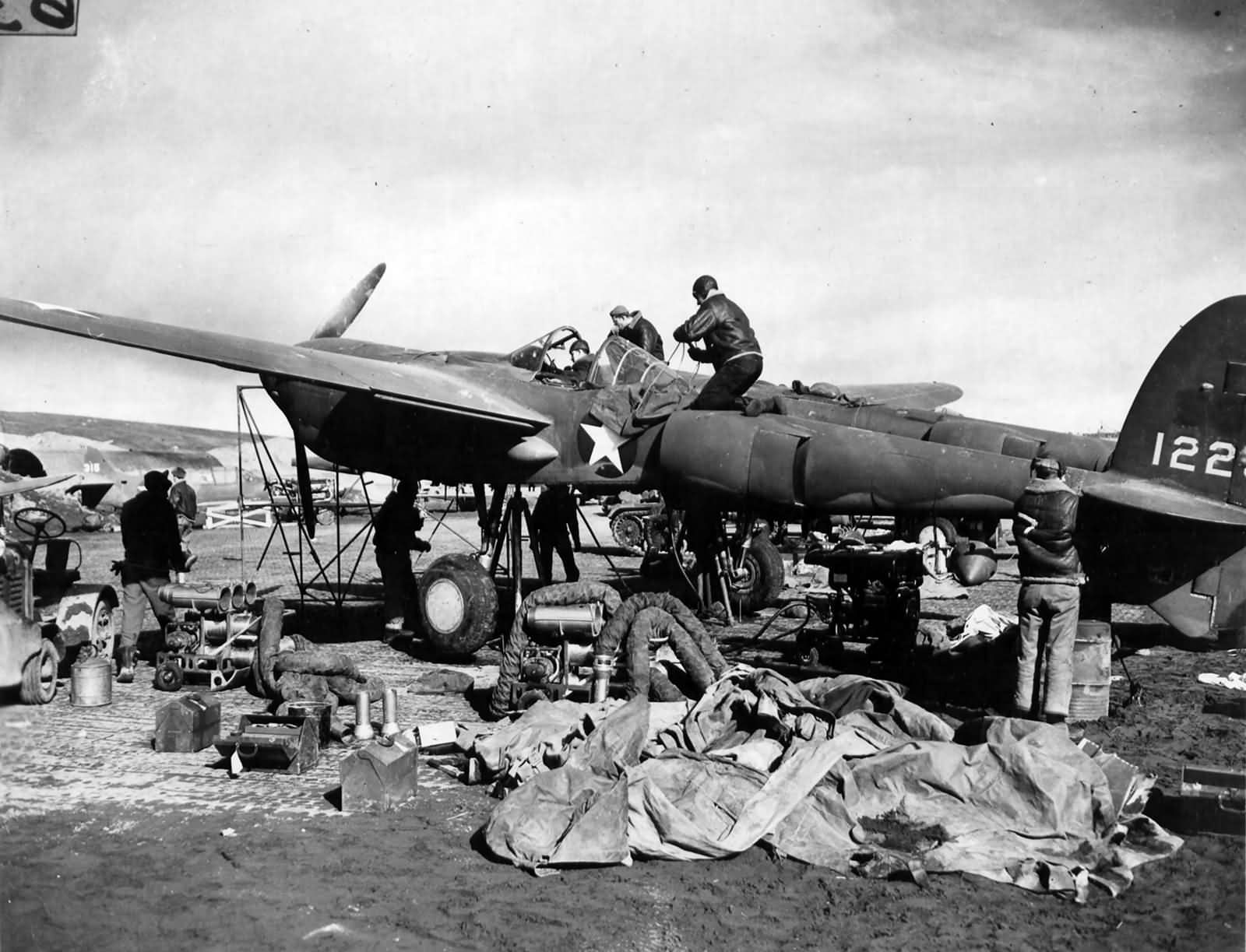During wartime, Lockheed ramped up production to introduce the P-38E. By November 1941, just before the infamous attack on Pearl Harbor, the company proudly announced that the hundredth Lightning had rolled off the assembly line. This marked a significant milestone for a fighter that had become increasingly complex due to war-time modifications, far more so than its prototype and YP-38 predecessors. The assembly line at Burbank, typically used for vehicle manufacturing, was adapted to build the P-38E, with three moving lines established.
The P-38E’s production involved breaking down the airframe into sub-sections, simplifying manufacture and assembly. The aircraft was constructed in eight major sections: the wing, tailplane, fuselage and center section, two forward booms, aft booms, undercarriage, and powerplant. The fuselage was equipped with all armament, communication instruments, and systems, making it a complete unit ready to join with the rest of the airframe.
The P-38E, the first major production model reflecting ‘war emergency’ enhancements, saw 210 units completed. The standardized armament included a Bendix/Hispano M-1 cannon, and the ammunition for the four .50in guns was increased from 200 to 500 rounds per gun, while cannon ammunition remained at 150 rounds. A significant yet invisible upgrade was the alteration of the tailplane incidence to improve handling. Additional updates included enhanced instrumentation, revised hydraulic and electrical systems, and winterization equipment. The large upper air scoops on each boom were replaced by two bullet-fairing intakes for supercharger cooling and a third small central intake for cabin heating. Inboard strakes were also added to deflect debris away from the cockpit if the turbo disintegrated.
Late-production P-38Es replaced the Hamilton Standard hollow steel propellers with Curtiss Electric solid dural types, and radio communication was handled by an SCR-274N set. Early models up to and including the P-38E had a right-hand sideways-opening canopy, later hinged at the rear on subsequent models. The pitot head, initially under the fuselage nose, was moved below the port wing on the P-38F. The P-38E also featured the original long nose wheel door, which was shortened in later models.
The machine-gun arrangement on the P-38E was staggered to allow a more direct ammunition feed, reducing jamming issues seen in earlier versions. Some P-38Es were among the first to carry external fuel tanks, with Interstate D-20 bomb shackles attached under the inboard wing panels, enabling the carrying of up to 300 U.S. gallons in fin-stabilized tanks, although normal capacity was 155/165 U.S. gallons.
Various P-38Es were used for manufacturer’s tests, including radiator configurations and laminar-flow wing sections. For instance, P-38E 41-1983 was used to test the ‘beard’ radiator configuration, later adopted for the P-38J, and P-38E 41-2047 was modified to gather data on laminar-flow wings, featuring a stretched central nacelle to accommodate a second seat, earning the name ‘Swordfish.’
Although Britain canceled its primary order for P-38s, it did not sever ties with the aircraft completely. A P-38E was made available to the British Purchasing Commission at Wright Field on April 8, 1941. The British reported favorable handling characteristics, though they noted the elevator was heavy. Despite positive feedback, it was unlikely the RAF would have used the P-38 in action due to the production challenges Lockheed faced in delivering sufficient numbers.
